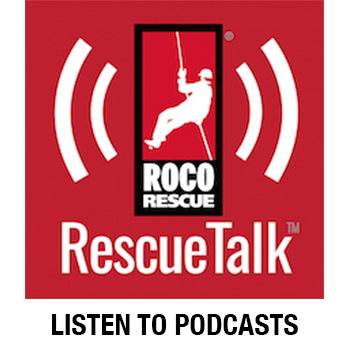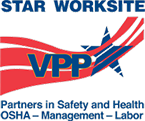 Often the question comes up about using a local fire department for confined space rescue coverage in an industrial facility; and if it would be in compliance with OSHA 1910.146? In addition to the proper evaluation of the prospective rescue service, we always stress the need for “reciprocal communications” between the rescue service and the employer. For example, if the rescue service becomes unavailable at any time during a PRCS entry, the rescue service agrees to contact the employer so that the entry can be immediately suspended until the rescue service is once again available to respond in a timely manner.
Often the question comes up about using a local fire department for confined space rescue coverage in an industrial facility; and if it would be in compliance with OSHA 1910.146? In addition to the proper evaluation of the prospective rescue service, we always stress the need for “reciprocal communications” between the rescue service and the employer. For example, if the rescue service becomes unavailable at any time during a PRCS entry, the rescue service agrees to contact the employer so that the entry can be immediately suspended until the rescue service is once again available to respond in a timely manner.
Scenario: An employer evaluates and selects a local fire department using the guidance provided in Appendix F of the PRCS standard, Rescue Team or Rescue Service Evaluation Criteria (Non- mandatory). The employer has determined that the local fire department is adequately trained and equipped to perform permit space rescues of the kind needed at the facility. The employer has also made a performance evaluation of the service in which the employer has measured the performance of the team or service during an actual or practice rescue. However, the local fire department cannot guarantee that the rescue team will not be sent on another call during the employer’s permit-space entry operations. In other words, they have the ability to respond in a timely basis, unless another call prevents them from doing so.
Question: If the employer selects this local fire department as its off-site rescue service, would the employer be in compliance with 1910.146(k)(1)?
29 CFR 1910.146(k)(1) provides:
(1) An employer who designates rescue and emergency services, pursuant to paragraph (d)(9) of his section, shall:
(i) Evaluate a prospective rescuer’s ability to respond to a rescue summons in a timely manner, considering the hazard(s) identified;
Note to paragraph (k)(1)(i): What will be considered timely will vary according to the specific hazards involved in each entry. For example, 1910.134, Respiratory Protection, requires that employers provide a standby person or persons capable of immediate action to rescue employee(s) wearing respiratory protection while in work areas defined as IDLH atmospheres.
(ii) Evaluate a prospective rescue service’s ability, in terms of proficiency with rescue-related tasks and equipment, to function appropriately while rescuing entrants from the particular permit space or types of permit spaces identified;
(iii) Select a rescue team or service from those evaluated that:
(A) Has the capability to reach the victim(s) within a time frame that is appropriate for the permit space hazard(s) identified;
(B) Is equipped for and proficient in performing the needed rescue services;
(iv) Inform each rescue team or service of the hazards they may confront when called on to perform rescue at the site; and
(v) Provide the rescue team or service selected with access to all permit spaces from which rescue may be necessary so that the rescue service can develop appropriate rescue plans and practice rescue operations.
Note to paragraph (k)(1): Non-mandatory appendix F contains examples of criteria which employers can use in evaluating prospective rescuers as required by paragraph (k)(1) of this section.
The employer must evaluate and select an off-site rescue service that has the capability to respond in a timely manner to the particular hazards at issue and to the types of emergencies that may arise in the employer’s confined spaces. The criteria employers can use in evaluating and selecting a service include determining whether the service is unavailable at certain times of the day or in certain situations, the likelihood that key personnel of the rescue service might be unavailable at times, and, if the rescue service becomes unavailable while an entry is underway, whether the service has the capability of notifying the employer so that the employer can instruct the attendant to abort the entry immediately.
Compliance may require the employer to be in communication with the off-site rescue service prior to each permit space entry. In the scenario described, the employer must ensure close communication with the rescue service during entry operations so that if the rescue service becomes unavailable while an entry is underway, the employer can instruct the attendant to abort the entry immediately. Entry operations cannot resume until the entry supervisor verifies that the rescue service is once again able to respond in a timely manner.
ROCO COMMENTS:
It’s important to note that the off-site service must be willing to perform rescues at the employer’s workplace. As referenced in Appendix F (5)… For off-site services, is the service willing to perform rescues at the employer’s workplace? (An employer may not rely on a rescuer who declines, for whatever reason, to provide rescue services.)
Also, while a written agreement with the local agency is not necessarily required by the regulation, it certainly would make it easier to document that an agreement to respond was in place – and that the department had an understanding of the scope of services to be provided at the employer’s site (i.e., confined space rescue).


 Princeton Township, NJ-The sad news of a rescue squad member losing his life in Hurricane Irene reminds us of the courage it takes to serve others, and the dangers that are faced in the line of duty. A Princeton First Aid and Rescue squad member who was swept away in swift moving flood waters while attempting to search a submerged car during Hurricane Irene has died from his injuries, police said this morning.
Princeton Township, NJ-The sad news of a rescue squad member losing his life in Hurricane Irene reminds us of the courage it takes to serve others, and the dangers that are faced in the line of duty. A Princeton First Aid and Rescue squad member who was swept away in swift moving flood waters while attempting to search a submerged car during Hurricane Irene has died from his injuries, police said this morning. Here’s a follow up to a Confined Space Fatality story we published earlier this year. One of the injured persons (a “would be” rescuer and co-worker of the initial victim) remains hospitalized since January. According to a Cal/OSHA Chief, “it is unfortunately common for other employees to be injured or killed while attempting impromptu rescue of the initial victim.” In fact, NIOSH states that prior to enactment of the permit-required confined space regulation, 60% of all fatalities in confined space incidents where multiple fatalities occurred were “would-be” rescuers.
Here’s a follow up to a Confined Space Fatality story we published earlier this year. One of the injured persons (a “would be” rescuer and co-worker of the initial victim) remains hospitalized since January. According to a Cal/OSHA Chief, “it is unfortunately common for other employees to be injured or killed while attempting impromptu rescue of the initial victim.” In fact, NIOSH states that prior to enactment of the permit-required confined space regulation, 60% of all fatalities in confined space incidents where multiple fatalities occurred were “would-be” rescuers. The Chilean and Pike River mine disasters in 2010 revealed the dangers and difficulties faced in extracting those trapped beneath the earth. The earthquakes and hurricanes on the east coast of the US this month are an indication that extrication training and resources have never been needed more. Structural collapse, trench rescue and extrication from confined spaces (including mine incidents) have a common element. Many have unknown dangers: poisonous gases, flooded tunnels, explosive vapors, unstable structures… all obstacles that can significantly slow rescue operations.
The Chilean and Pike River mine disasters in 2010 revealed the dangers and difficulties faced in extracting those trapped beneath the earth. The earthquakes and hurricanes on the east coast of the US this month are an indication that extrication training and resources have never been needed more. Structural collapse, trench rescue and extrication from confined spaces (including mine incidents) have a common element. Many have unknown dangers: poisonous gases, flooded tunnels, explosive vapors, unstable structures… all obstacles that can significantly slow rescue operations.


